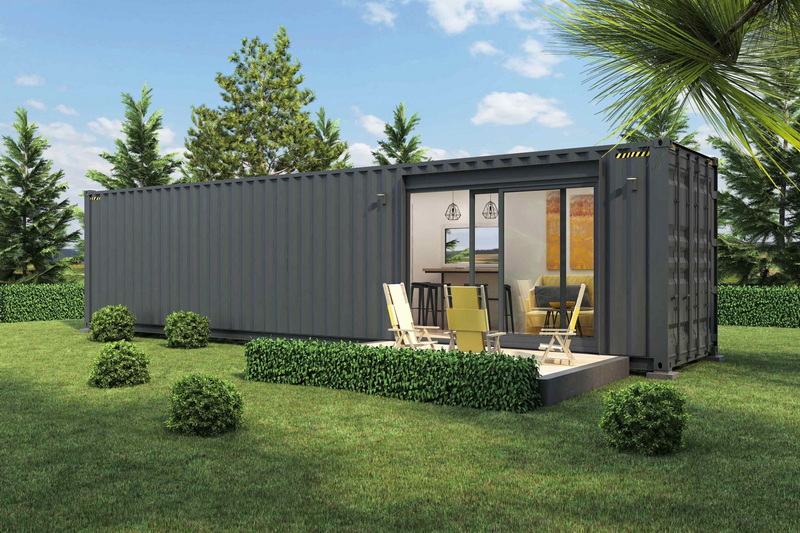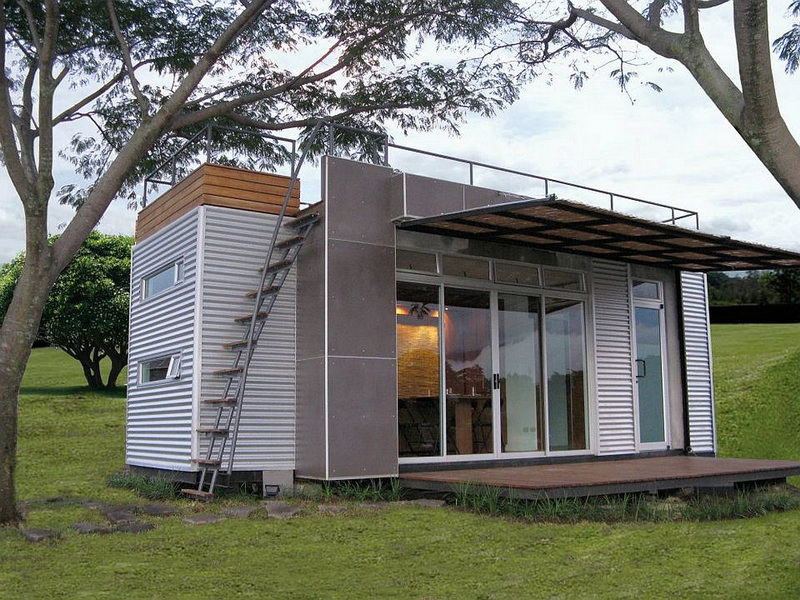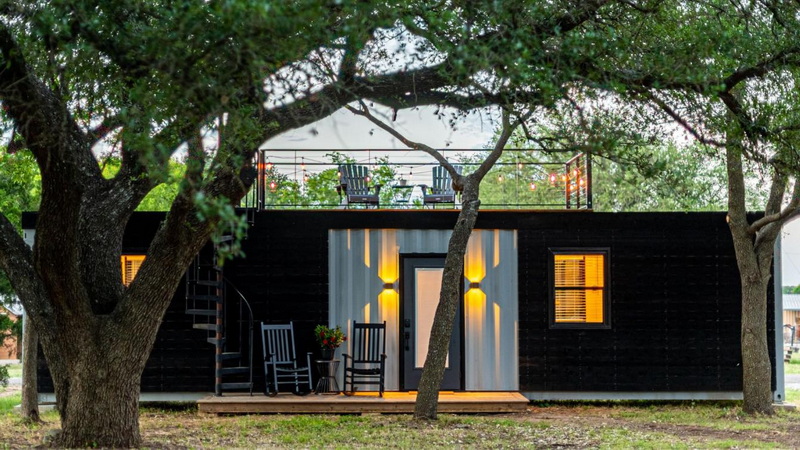Content Menu
● Why Choose Container Houses in Australia?
● Manufacturing Process of Container Houses in Australia
>> 1. Design and Planning
>> 2. Container Selection and Modification
>> 3. Off-Site Fabrication
>> 4. Transportation and Site Setup
>> 5. Final On-Site Work
● Leading Container House Manufacturers and Suppliers in Australia
>> Container Build Group
>> Gateway Containers
>> SteelBlox
>> Australasia Container Trade
>> Tiny Homes SA
>> Sonic Steel
● Innovation and Sustainability
● Regulatory Compliance and Building Codes
● Conclusion
● FAQ
>> 1. What are the advantages of choosing container houses over traditional homes?
>> 2. Are container houses safe and compliant with Australian building regulations?
>> 3. Can container houses be used for purposes other than residential living?
>> 4. What customization options do container house manufacturers offer?
>> 5. How long does it typically take to build and install a container home?
Container houses have become a transformative force in Australia's housing market. These innovative homes made from repurposed shipping containers offer an eco-friendly, affordable, and highly customizable alternative to traditional construction methods. This article delves into the leading container house manufacturers and suppliers in Australia, examines the manufacturing process, regulatory compliance, and highlights the cutting-edge designs and sustainability features that make these houses ideal for modern living.

Why Choose Container Houses in Australia?
Australia's unique climate, diverse geography, and evolving housing needs make container houses an excellent solution for many. They have gained immense popularity due to their benefits:
- Eco-Friendly Construction: Container houses recycle shipping containers, reducing scrap metal waste and promoting sustainability.
- Cost-Effectiveness: They typically cost about 30% less than conventional construction methods.
- Quick Build Time: Prefabrication off-site accelerates construction, reducing delays caused by weather and on-site work.
- Customization and Expansion: Modular nature allows easy design tailoring and future expansion.
- Durability and Safety: Built to endure shipping stress, container homes resist harsh environmental conditions and comply with Australian standards.
- Versatile Uses: Adaptable for homes, offices, pop-up shops, emergency housing, and more.
Manufacturing Process of Container Houses in Australia
Understanding the manufacturing process sheds light on why container houses are a sought-after option. Most manufacturers follow these stages:
1. Design and Planning
Each project begins with architectural plans tailored to the client's needs, budget, and site conditions. Plans incorporate structural integrity, layout, insulation, plumbing, and electrical requirements.
2. Container Selection and Modification
Manufacturers procure high-quality steel shipping containers, then modify them in controlled factory environments. This includes cutting openings for windows and doors, welding reinforcement, and retrofitting insulation and ventilation.
3. Off-Site Fabrication
Most construction happens off-site to avoid weather-related delays. This includes framing, flooring installation (avoiding hazardous materials), electrical and plumbing rough-in, and interior finishing.
4. Transportation and Site Setup
Modified containers are transported to the site where foundations and footings are prepared. Containers are lifted into place using cranes and secured.
5. Final On-Site Work
Welding containers together, completing interior finishes, connecting to utilities like water, power, and sewage, and installing furnishings.
This efficient process typically reduces construction time significantly compared to traditional homes, exemplified by build times often ranging from a few weeks to a couple of months depending on complexity.

Leading Container House Manufacturers and Suppliers in Australia
Container Build Group
An industry leader based in New South Wales, Container Build Group specializes in luxury container homes and portable buildings. Their portfolio includes fully customizable designs emphasizing off-grid capabilities, sustainability, and modern aesthetics. With a 10-year structural warranty and adherence to Australian building codes, they ensure durable, high-quality homes.
Gateway Containers
Gateway Containers brings over 20 years of expertise to shipping container manufacturing in Australia. Renowned for robust construction and attention to detail, their homes combine style with functionality. They meet rigorous quality standards and adapt designs to suit urban and rural needs.
SteelBlox
SteelBlox focuses on prefabricated container homes that merge sustainability with energy efficiency. Offering a 20-year structural guarantee, they prioritize modern design while maintaining affordability. Their homes balance environmental responsibility with comfortable, stylish living.
Australasia Container Trade
One of Australia's largest container home manufacturers, Australasia Container Trade provides a wide range of models, from basic to luxury housing. Their designs integrate evolving interior designs and construction innovations to meet customer expectations for safety and durability.
Tiny Homes SA
Located in South Australia, Tiny Homes SA specializes in high-quality container and tiny homes, focusing on compact living. Their services streamline council approval processes and tailor homes from 20ft to combined 40ft containers, offering affordable yet quality craftsmanship.
Sonic Steel
Sonic Steel operates in Victoria, New South Wales, and South Australia, with a focus on innovative insulation and ventilation tailored for container houses. Their proprietary VenSulation system optimizes thermal performance and moisture control, ensuring year-round comfort.
Innovation and Sustainability
Australian manufacturers are pioneers in integrating modern technology and sustainable practices into container homes. Innovations include:
- High-performance Rockwool insulation for thermal efficiency.
- Advanced ventilation systems, notably Sonic Steel's VenSulation.
- Solar power setup with battery storage.
- Rainwater harvesting and greywater recycling systems.
- Modular designs that allow future expansion or relocation.
These features empower homeowners to live sustainably off-grid or reduce environmental footprints in urban environments.
Regulatory Compliance and Building Codes
Container houses are considered permanent structures in Australia and must meet the same standards as traditional houses under the Building Code of Australia (BCA). Key regulatory aspects include:
- Obtaining local council planning permissions and building permits.
- Structural certifications, especially for container modifications.
- Inspections for foundations, electrical wiring, plumbing, insulation, and fire safety.
- Compliance with energy efficiency and health standards to ensure safe, comfortable living.
Navigating these regulations often requires professional support from experienced builders and architects.
Conclusion
Australia's top container house manufacturers and suppliers blend innovation, quality construction, and sustainability to meet the demand for affordable and eco-friendly housing solutions. Companies like Container Build Group, Gateway Containers, SteelBlox, Australasia Container Trade, Tiny Homes SA, and Sonic Steel set industry standards through design excellence, regulatory compliance, and customer-focused services. With advanced materials, off-site prefabrication, and creative modular designs, container homes offer a flexible future-proof alternative to conventional building. Whether for permanent residences or multifunctional spaces, container houses represent the future of Australian housing by harmonizing environmental care with modern lifestyle needs.

FAQ
1. What are the advantages of choosing container houses over traditional homes?
Container houses offer sustainability, lower cost, faster construction, and customizable designs with high durability.
2. Are container houses safe and compliant with Australian building regulations?
Yes, top manufacturers comply fully with the Building Code of Australia, and professional inspections ensure safety and structural integrity.
3. Can container houses be used for purposes other than residential living?
Definitely. They are versatile for offices, shops, emergency homes, cafes, and more.
4. What customization options do container house manufacturers offer?
Manufacturers customize layout, size, finishes, eco-friendly systems like solar, insulation, and can design modular expansions.
5. How long does it typically take to build and install a container home?
Depending on design complexity and approvals, builds typically take a few weeks to several months from design to completion.






















